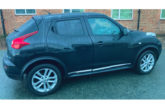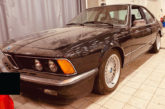
At peak performance the belt, tensioner, idler and pulleys inside the Auxiliary Belt Drive System (ABDS) work together smoothly, to provide the drive for systems, such as the power steering, alternator, air conditioning and, sometimes, the cooling systems via the water pump.
At the heart of the system is the multi-ribbed belt. It must be flexible enough to transmit power around the smaller pulleys at high revs under full load, yet capable of enduring extremes of temperature without losing structural integrity. Prolonged idling may also have severe consequences for an ABDS tensioner due to engine speed fluctuations.
In engines that are more compact and which generate more power, today’s belts must be able to deliver the increased power while conforming to strict criteria that insists components are more lightweight and last longer.
The Gates Micro-V Horizon is a new belt that achieves all this and more. However, it relies on the stability and endurance of the other components in the drive. They, too, are subject to wear. If their performance begins to fail, there are consequences elsewhere in the ABDS.
That’s why today’s drive system specialists must be adept at various diagnostic skills that can help detect wear and determine the difference between the symptom and cause of a problem.
Gates helps mechanics develop these skills through specialist workshops hosted by local motor factors, as well as by providing free access to online ‘Technical Bulletins’. The company has also published a ‘Troubleshooting Guide’ to help mechanics identify problems before they become serious issues.
Some of the issues discussed in the guide consider the use of sight and sound to identify problems.
Sounds like a problem
Why is it that when a driver reports a noisy ABDS, the symptoms often seem to disappear once the vehicle enters the workshop?
Don’t overlook the need to replicate the ‘under load’ conditions. The following, with the engine running, should prepare the scene nicely:
1) Turn the A/C on and up to ‘full’
2) Switch on the side and headlights
3) Give the steering wheel a 3/4 turn to the left or right
4) Push the heated rear windscreen button
Belt noise is an indication of malfunction. The common sounds to listen for are:
Chirping
Chirps are frictional vibrations, which are subsequently transmitted as noise. It’s often one of the symptoms of misalignment. If revving the engine makes the frequency increase, misalignment of the pulleys is likely.
In such circumstances, when a multi-ribbed belt span enters the grooves of the pulley, initial contact is made with just the side of the groove. As the misalignment angle increases, there is more the chance of noise because of the angle of entry to the pulley. Urgent inspection is required to confirm the diagnosis.
Squealing
The squealing noise that’s heard as a vehicle pulls away from rest usually suggests a lack of belt tension, which is the second most common source of belt noise. As the belt slips, the sidewalls become smooth and eventually a hardening of the belt, as a result of ‘heat ageing’, takes place. This is commonly referred to as ‘glazing’. A visual inspection will usually confirm this.
Tapping/ticking/grinding
Debris trapped in the grooves of the belt will generate noise commonly described as ‘tapping’, ‘ticking’ or ‘grinding’. However, a grinding noise can be generated also, by damaged bearings in the pulley assembly. Be sure to check for every eventuality.
To identify this as a possible source of noise:
a) Turn off the engine
b) Remove the ABDS belt
c) Spin all of the pulleys by hand
If any seem difficult to turn or if they rattle in any way, you have identified a problem.
Looks like an issue
Used appropriately, a visual inspection is the key to diagnosing ABDS problems. Inside today’s compact engines, vehicle manufacturers often include a TVD inside the system in place of traditional crankshaft pulleys. The TVD’s rubber ‘damping element’ helps improve the drive NVH (noise, vibration and harshness) characteristics.
Designed to absorb vibration, the TVD takes a lot of punishment so early detection of wear is essential. However, the damage is not always easy to spot. The rubber can harden, crack, deform, become loose or wear out while the outer ring can begin to slip and separate. Fortunately, the resulting patterns of wear can be identified using the Gates Troubleshooting Guide.









